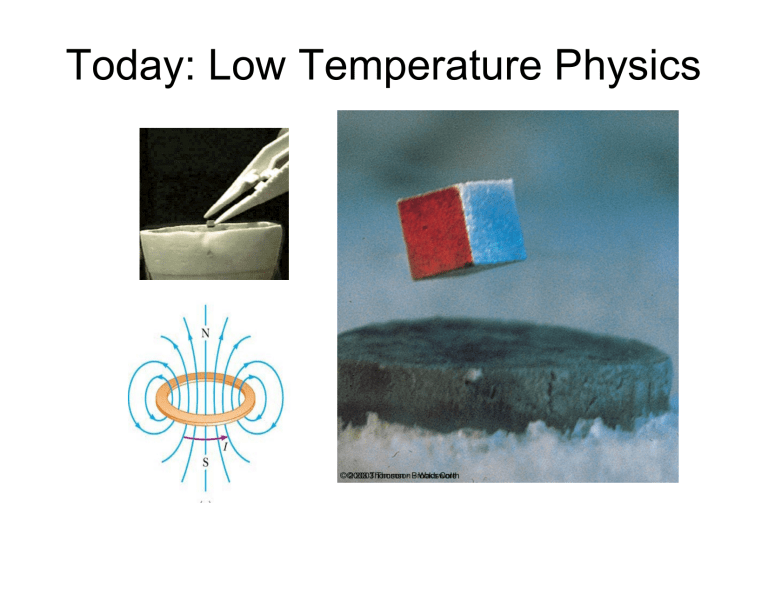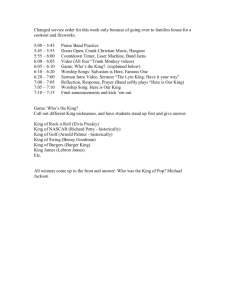Today: Low Temperature Physics

Today: Low Temperature Physics
Temperature Scales
Most of the world uses the
Celcius scale rather than the Farenheit
Æ Water boils at 100 o C and freezes at 0 o C
Æ T( o C)=5/9 [T( o F)-32 o ]
Most of scientific world uses Kelvin scale
Æ Same degree unit as Celcius but 0 o = absolute zero
Temperature we’ll be working at today
Æ What are effects of these low temperatures on materials?
Farenheit Celcius Comments Kelvin
212
32
-300.42
100
0
-195.79
Water boils
Water freezes
Liquid nitrogen boils
373.15
273.15
77.36
-452.11
-268.95
Liquid helium boils
-459.67
-273.15
Absolute 0
4.2
0
Quantum Theory
• In the quantum model of the atom, electrons can exist only in certain stable orbits.
• While they are in these orbits, they do not give off radiation.
• When they jump from one orbit to a lower one, they emit a photon of light of a given energy.
Semiconductors
Something similar holds true for the collection of atoms in a light emitting diode
(LED).
Conduction band
The electrons can either be in the valence band (lower energy) or in the conduction band (higher energy), but not in between
Æ The energy difference is called the band gap.
γ
Thermal energy can cause electrons to jump from the valence band to the conduction band.
λ= green at room temperature
Valence band
When they fall back down they emit a photon of light equal to the band gap energy
Æ This photon has a wavelength in the visible range (green), at room temperature which makes an LED useful.
Semiconductors
The band gap separation decreases as the temperature decreases, meaning the energy of the emitted photons decrease.
This gives a longer wavelength to the emitted photons.
What happens to the c o l o r ?
Conduction band
γ
λ
Valence band
Superconductors
For metals, as the temperature decreases the resistivity decreases.
For superconductors, the resistivity falls to exactly zero at some critical temperature.
Æ Not close to zero, exactly zero.
Superconductors
Particle accelerators use superconducting magnets.
Superconductors
In addition to zero resistance, superconductors are perfect diamagnets.
Superconductors – Diamagnetism
Besides ferromagnetism, there are two other types of magnetism.
Æ paramagnetism
Æ diamagnetism
Superconductors are perfect diamagnetics.
Æ This means they really, really hate magnetic fields… and will do anything they can to get rid of them.
Superconductors – Diamagnetism
How does this work?
Æ Superconductors hate magnetic fields and will do anything possible to push them away
Æ You can push a magnet away by creating another magnetic field.
Æ Remember that current loops produce magnetic fields.
N
S magnet
Superconductor
Superconductors – Diamagnetism
How does this work?
Æ Superconductors hate magnetic fields and will do anything possible to push them away
Æ You can push a magnet away by creating another magnetic field.
current loop
Æ Remember that current loops produce magnetic fields.
N
S magnet




